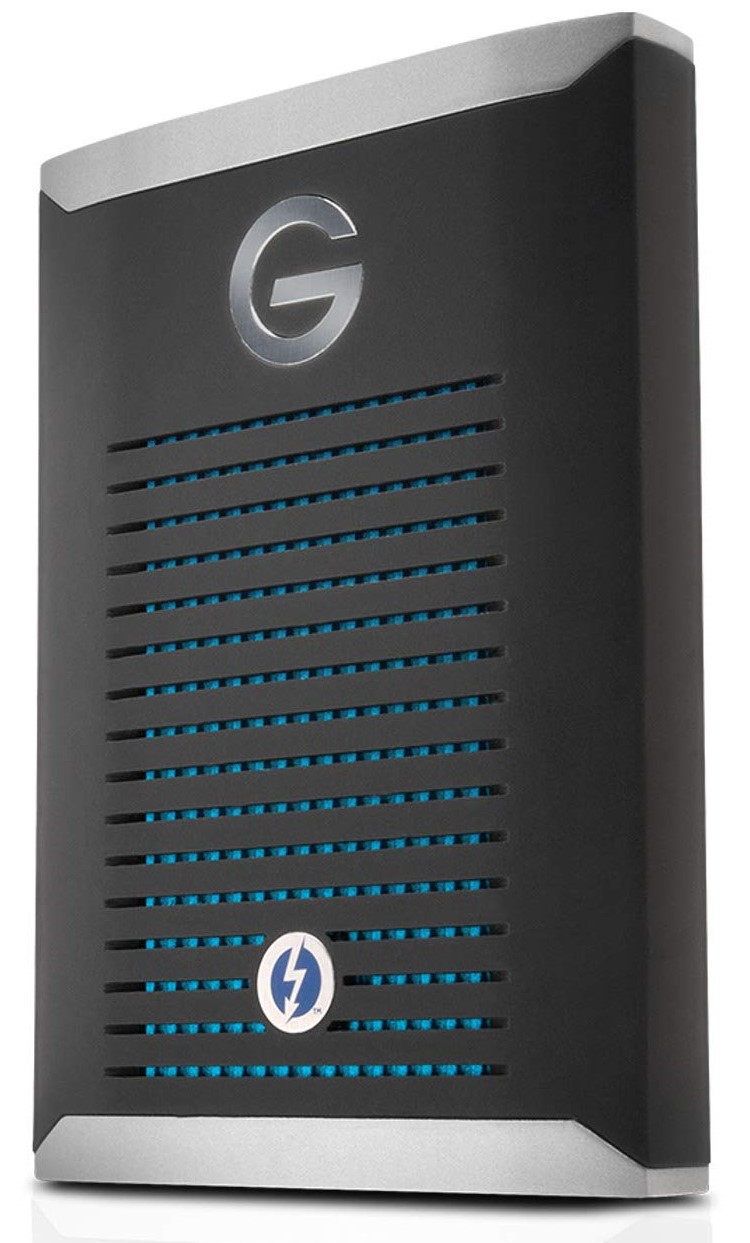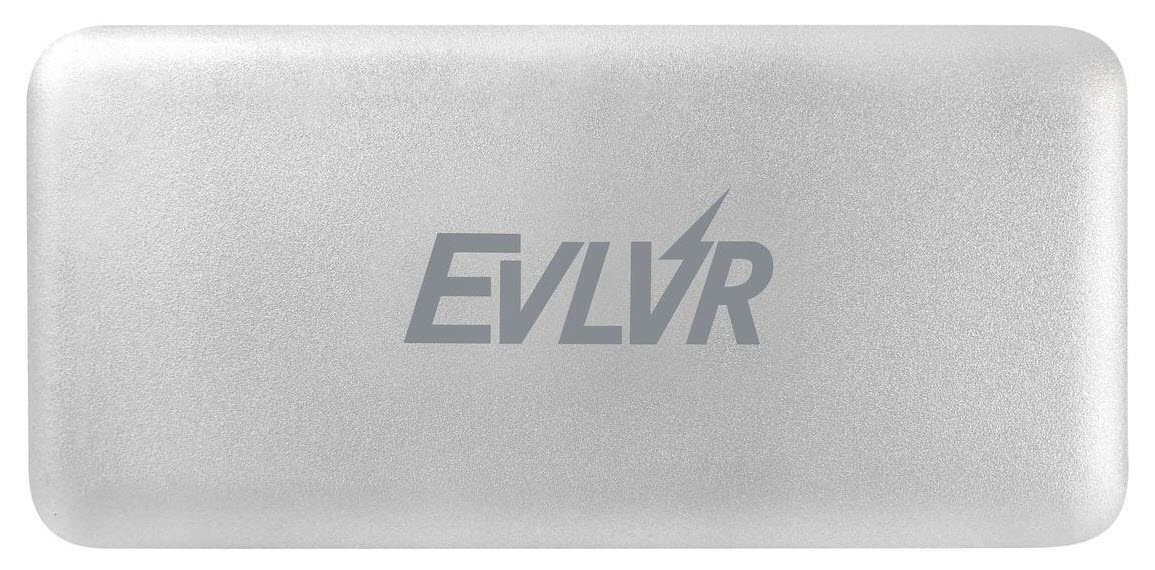MyDigitalSSD M2X NVMe Enclosure Review: Put NVMe in Your Pocket
Why you can trust Tom's Hardware
Performance Results
Comparison Products
We installed MyDigitalSSD’s latest BPX Pro NVMe SSD to test the external enclosure. Rated at over 3 GB/s read/write, the BPX Pro will have no issue saturating the adapter's 10GB/s link. For reference, we’ve also included three Thunderbolt 3 devices, the 1TB G-Technology G-Drive mobile Pro SSD, 1TB Patriot Evlvr, and 1TB Samsung X5. Additionally, we threw in SanDisk’s 1TB Extreme Portable SSD, which also utilizes a USB 3.1 Gen 2 link but is limited to SATA performance. Finally, two DIY USB 3.1 Gen 1 external drives armed with a WD Blue SSD and HDD round out the test pool.
ATTO
ATTO is a simple and free application that SSD vendors commonly use to assign sequential performance specifications to their products. It also gives us insight into how the device handles different file sizes.


Compared to the native NVMe performance of the BPX Pro, the adapter provides a bit less performance at the smaller file sizes. But read and write speeds come in at 1GB/s for the 128K file size, matching our expectations. This is double the SanDisk Extreme portable and far exceeds the performance of our DIY externals that lack UASP support.
CrystalDiskMark
CrystalDiskMark (CDM) is a simple and easy to use storage benchmarking tool.

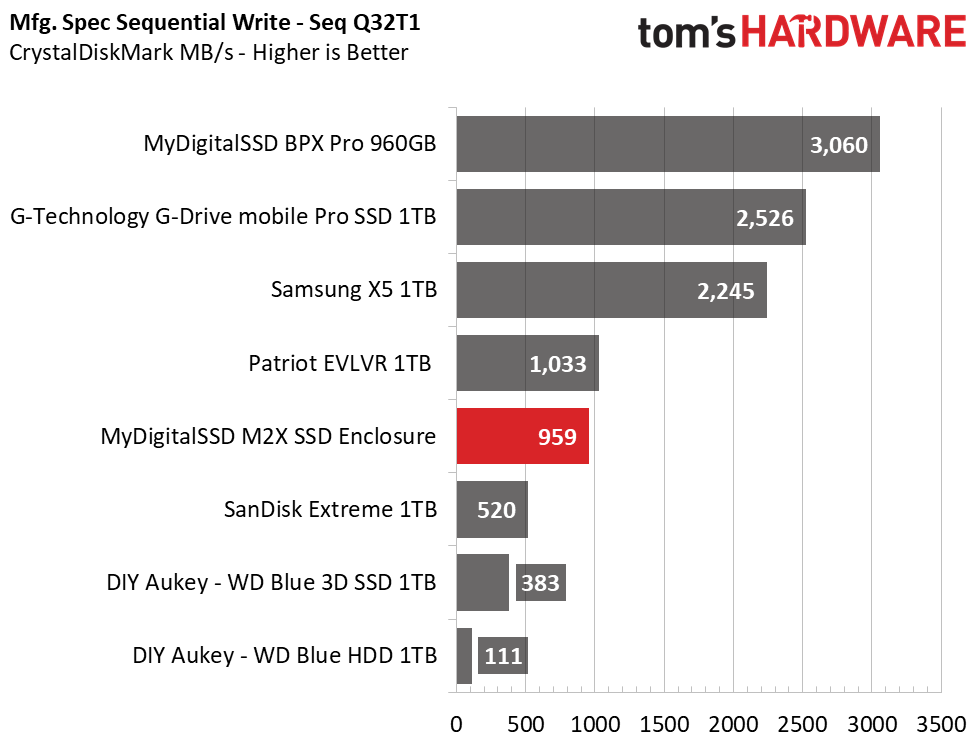
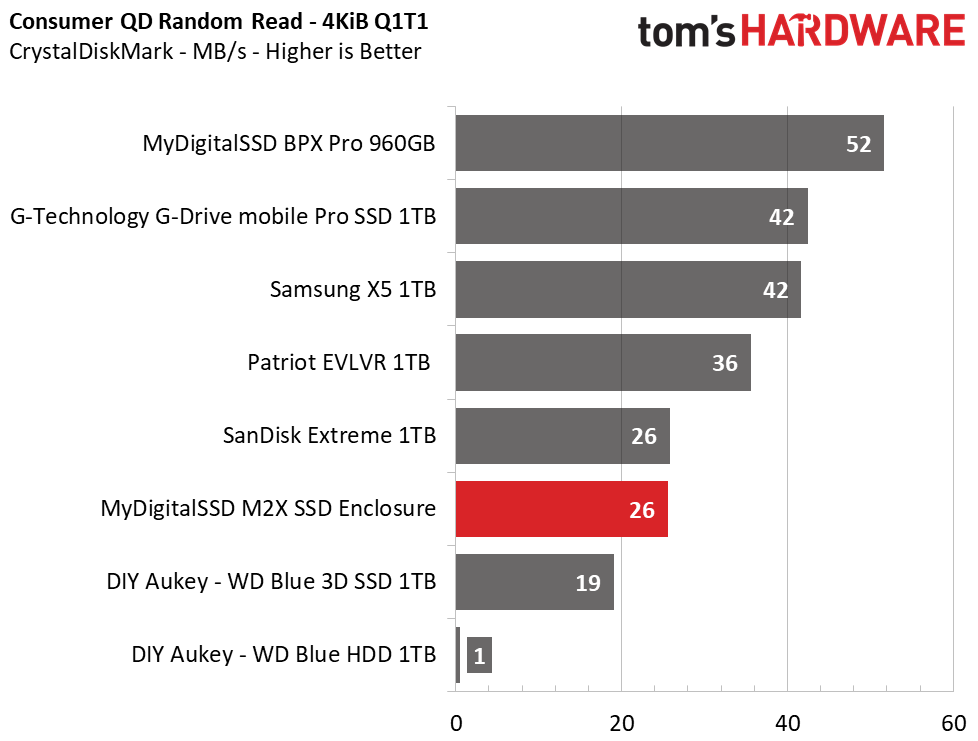
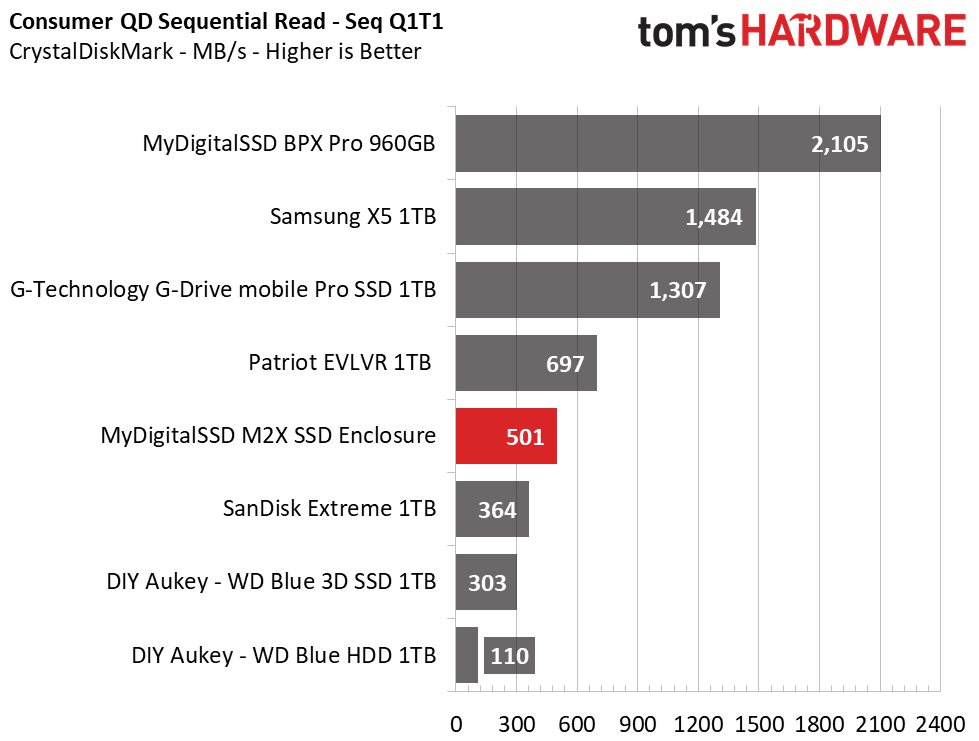
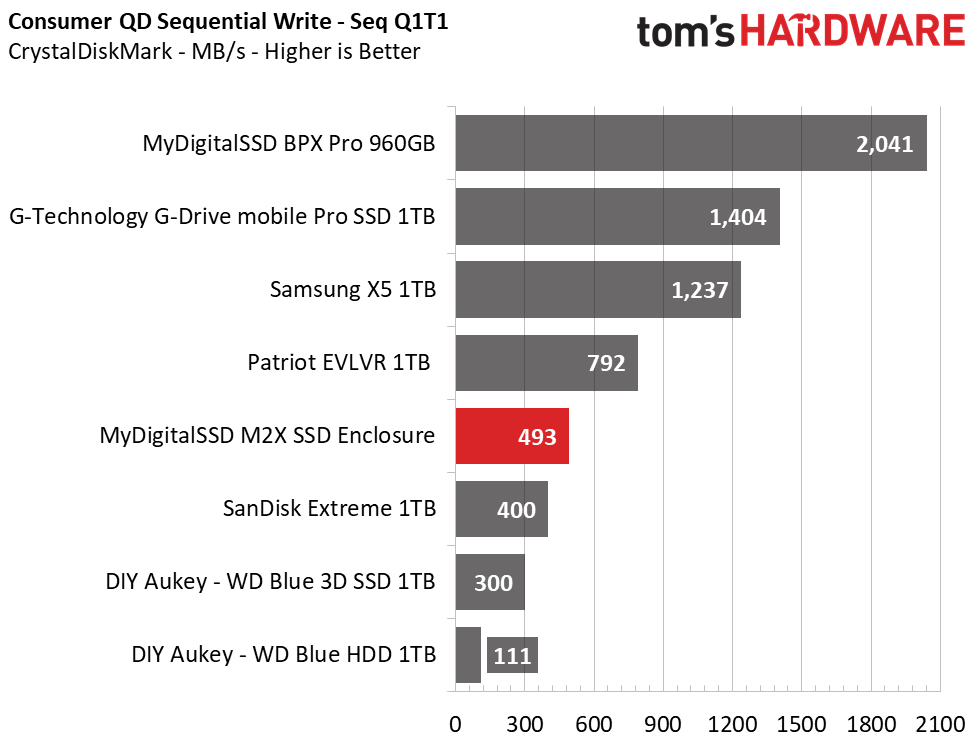
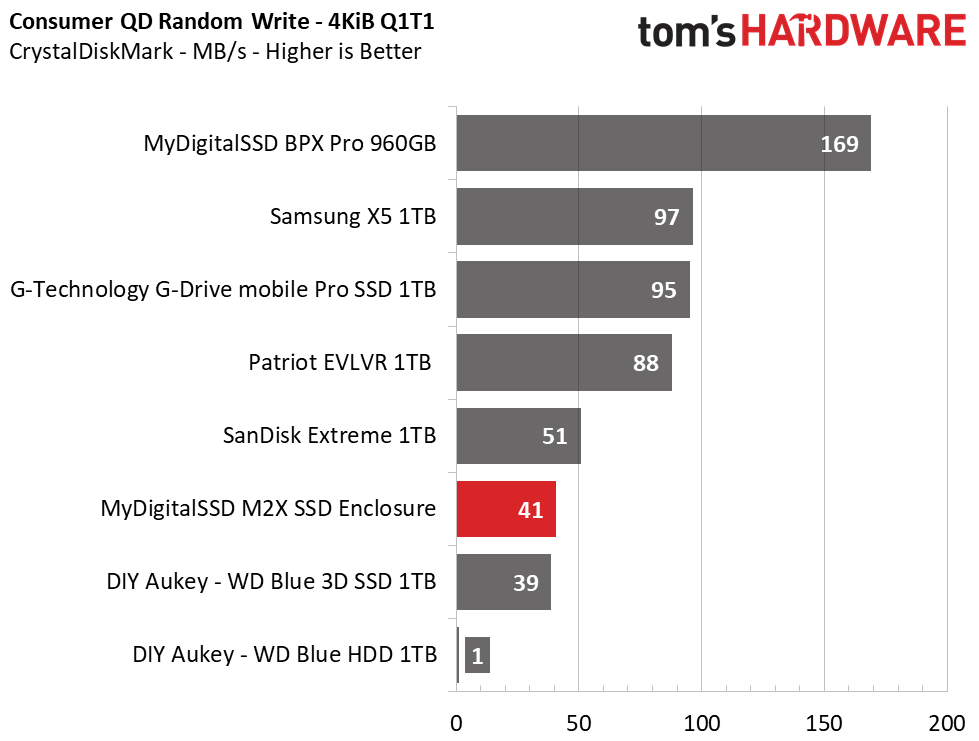
As was with ATTO, the M2X adapter allows the BPX Pro to hit sequential speeds of nearly 1 GB/s. Scaling the load back to a QD of 1, which represents a dragging and dropping a single file, the M2X adapter seems to be limited to 500 MB/s read/write. While lower than the rated 10 Gb/s, this still exceeds the SanDisk Extreme’s performance of 364/400 MB/s read/write. Additionally, 4K random performance took a big hit compared to native speed, but overall, the drive is still decent for an external.
Transfer Rates – DiskBench
DiskBench is a storage benchmarking tool that allows us to test the transfer or copy performance of a storage device with real data. We test external drives with three file transfers that consist of 25GB of photos (10GB of iPhone jpgs and 15GB of RAW photos from a Canon 6D), 50GB of movies, and 25GB of documents. First, we transfer each folder from a 1TB NVMe SSD to the external device; then we follow up by reading a 3.7GB 7-zip file and a 15GB movie back from the device.



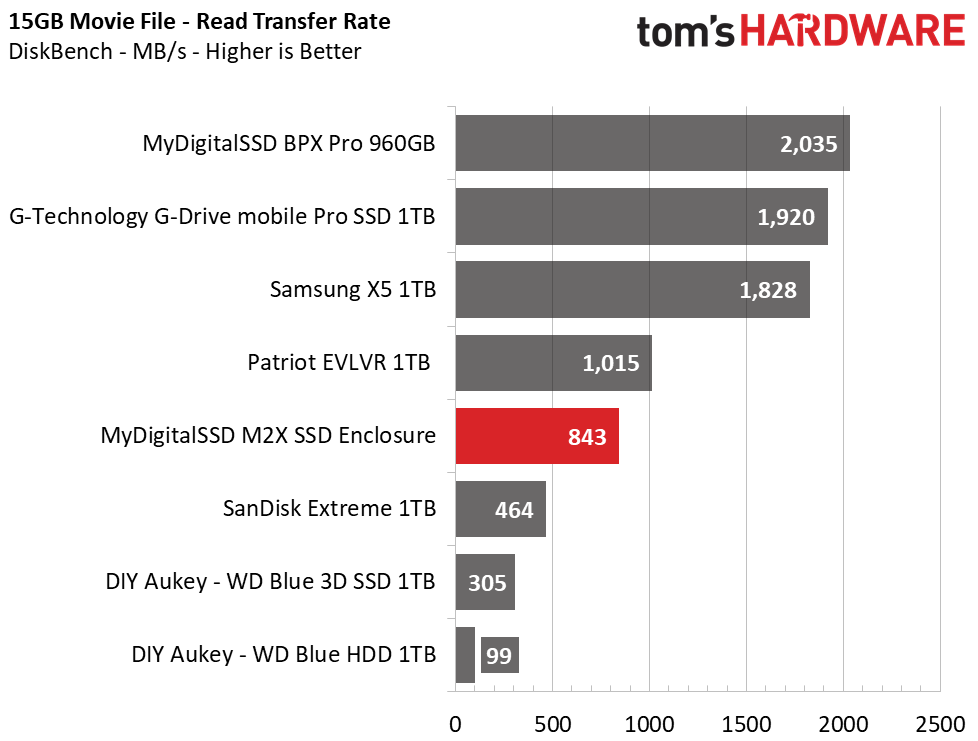
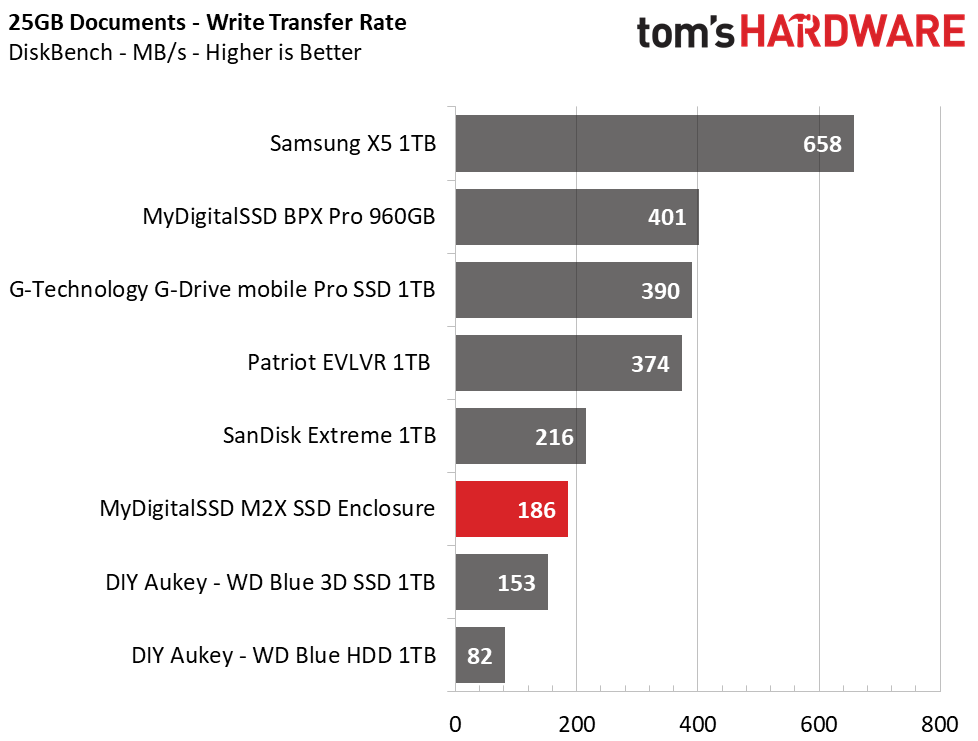
Like in our previous tests, the M2X surpasses both the DIY and pre-built SATA-based externals. During the 25 GB Photo and 50 GB Movie transfer, the M2X ranked behind the Thunderbolt-enabled devices but edged away from the other USB devices in the pool. During the transfer of 25 GB of document files, however, the SanDisk Extreme's faster 4K random speed helped it take the lead.
Get Tom's Hardware's best news and in-depth reviews, straight to your inbox.
The M2X enclosure delivered speeds of about 840 MB/s during our two file reading tests.
Trace Testing – PCMark 8 Storage Test 2.0
PCMark 8 is a trace-based benchmark that uses Microsoft Office, Adobe Creative Suite, World of Warcraft, and Battlefield 3 to measure the performance of storage devices in real-world scenarios.
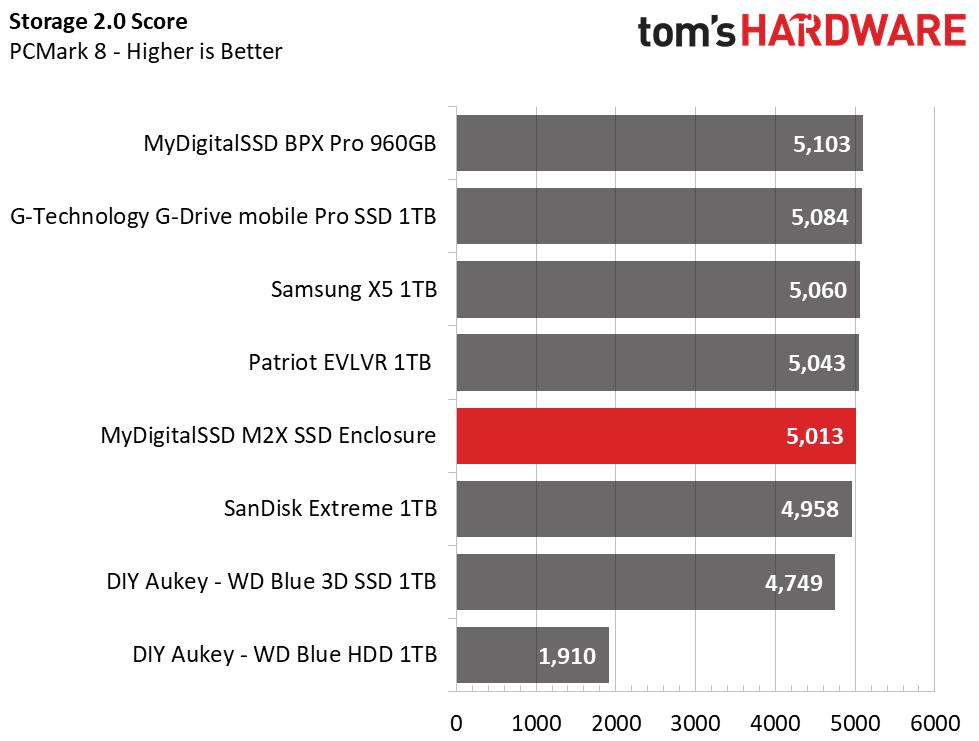
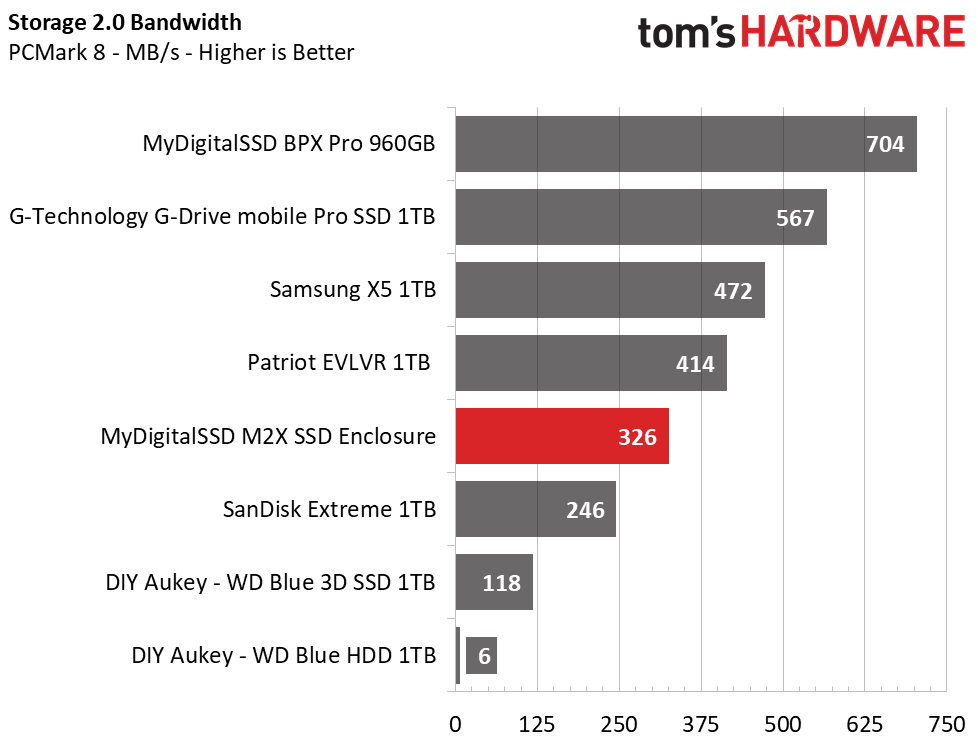
Without the adapter, the BPX Pro scored 5103 points and an average bandwidth of 704MB/s. Using the enclosure essentially halves the performance. But, overall, its total score of 5013 points and an average bandwidth of 326MB/s is faster than any internal SATA SSD we have tested yet. That makes it a good choice for video editors looking for a new scratch disk when internal expansion proves difficult.
MORE: Best SSDs
MORE: How We Test HDDs And SSDs
MORE: All SSD Content

Sean is a Contributing Editor at Tom’s Hardware US, covering storage hardware.

